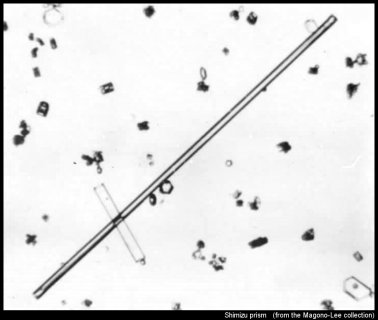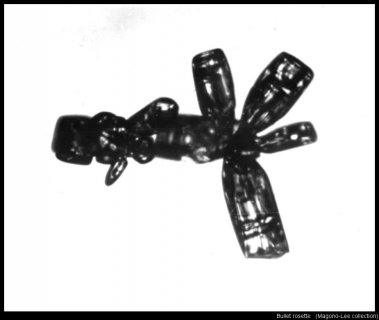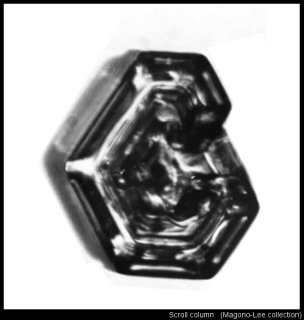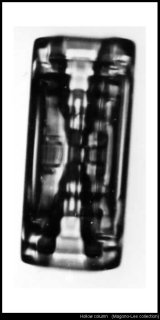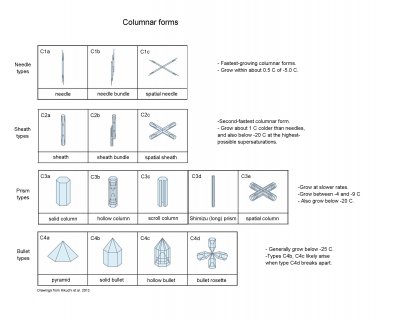| « A complete picture book of all (known) snow types | How clouds form snow » |
Columns!
The poor columns get left out of nearly all snow-crystal discussions, but they are an interesting type. So, to help them out a bit, here's my first column appreciation post.
Let's start with perhaps the most extreme column of all, the Shimizu prism*:
I say 'extreme' because they are so long and thin--sometimes over 1-mm long yet just 0.01-0.02 mm in diameter. These types have so far been found to fall only on the Antarctic Plateau. But in theory, they should be able to form elsewhere. It is like a "whisker" crystal, which Teisaku Kobayashi grew below -50 C on a surface in the lab. The image above shows many other crystals as well, including another solid column crossing the Shimizu prism.
Next, the bullet rosette:
The bullet rosette is most often found below -25 C in high cirrus clouds. It is an example of a polycrystal; in this case, a frozen droplet that froze into several distinct crystals (one for each "bullet").
Next, one of my favorites, the scroll column (though the picture doesn't quite do it justice):
In this form, the sides of the crystal seem to fold inward, like a scroll.
Finally (for now, anyway), the ubiquitous hollow column:
The funny banding you see (horizontal lines inside the 'hollow') is a mystery.
There are many other columnar forms, many of which are in the following diagram (as with all images here, click on it to see it enlarged)**:
One neat thing about the columnar forms is that you can see roughly exact replicas of them in hoarfrost. The Shimizu prism may be hard to find, but the others are common if you look closely.
-JN
* Images are from the Magono & Lee collection, used in their paper: Meteorological classification of natural snow crystals. J. Fac. Sci., Hokkaido Univ., Ser. VII 4, 321–335.
**Drawings are based on those in Kikuchi, Kameda, Higuchi, and Yamashita: A global classification of snow crystals, ice crystals, and solid precipitation based on observations from middle latitudes to polar regions. Atmos. Res. 132-133 (2013) 460-472.
